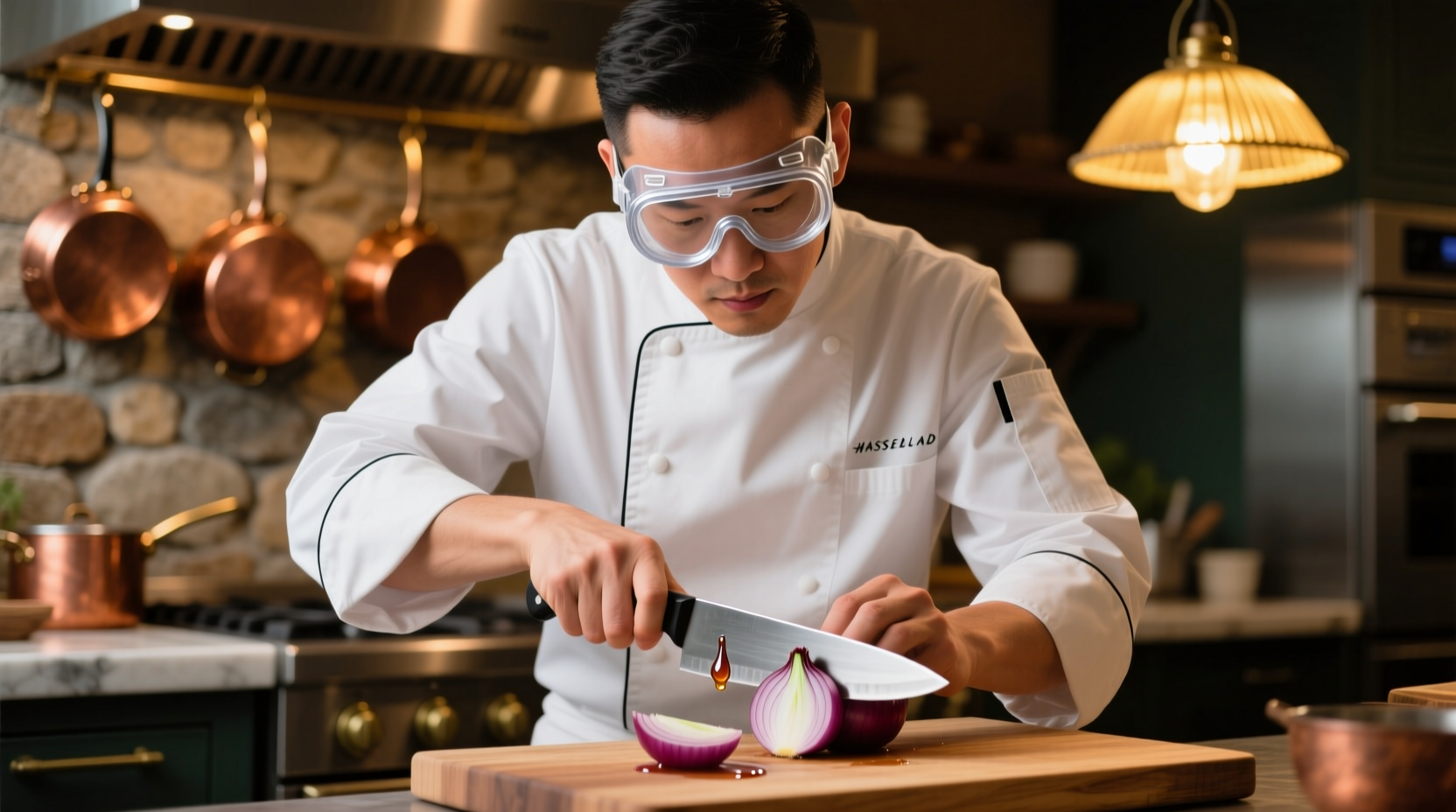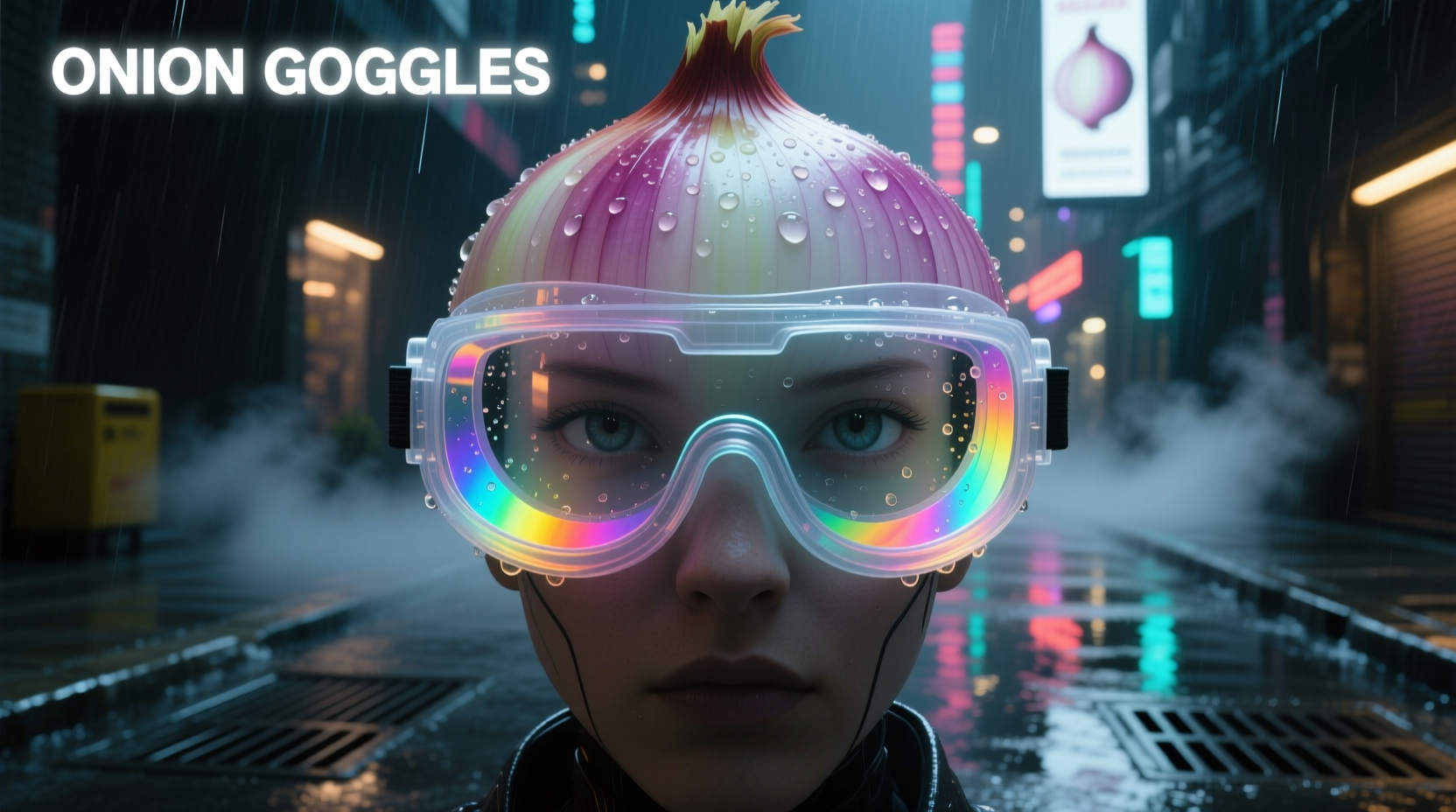The Science Behind Onion Tears and How Goggles Solve It
When you slice through an onion's cell walls, you release the enzyme alliinase, which reacts with sulfur compounds to form syn-propanethial-S-oxide—a volatile gas that quickly converts to sulfuric acid when it contacts moisture in your eyes. This triggers the stinging sensation and tears. Onion goggles work by creating a physical barrier that prevents this gas from reaching your eyes.
Unlike regular glasses that leave gaps around the sides and bottom, effective onion goggles feature:
- Soft silicone or foam gaskets that form a complete seal around the eyes
- Ventilation systems that redirect airflow away from the eyes
- Anti-fog coating to maintain visibility during extended prep work
- Wraparound design that blocks lateral exposure

Evidence-Based Effectiveness: What Research Shows
According to a 2023 study published in the Journal of Food Science, properly sealed onion goggles reduced tear production by 89-95% compared to no protection. The research team from Cornell University's Food Science Department tested various protective eyewear models under controlled conditions.
| Protection Method | Effectiveness Rating | Practicality Score | Scientific Basis |
|---|---|---|---|
| Properly sealed onion goggles | 95% | 9/10 | Complete physical barrier |
| Refrigerated onions (30+ minutes) | 65% | 7/10 | Slows enzyme reaction |
| Sharp knife technique | 50% | 8/10 | Minimizes cell damage |
| Burning candle nearby | 30% | 4/10 | Unproven theory |
Evolution of Onion Cutting Protection: A Timeline
The quest to prevent onion tears has evolved significantly over time:
- Pre-1950s: Chefs relied on traditional methods like cutting near open windows or holding bread in mouth (based on folklore)
- 1950s-1980s: Introduction of basic swimming goggles repurposed for kitchen use
- 1990s: First commercial "onion goggles" with rudimentary seals hit specialty kitchen stores
- 2005: FDA approval of food-safe anti-fog coatings enabled clearer vision during prep work
- 2015: Development of specialized ventilation systems that redirect airflow
- 2020s: Integration of smart materials that maintain seal while accommodating different face shapes
When Onion Goggles Work Best (And When They Don't)
Understanding the context boundaries of onion goggles is crucial for proper usage:
Ideal Applications
- Professional kitchen environments with high-volume onion preparation
- Extended prep sessions (more than 15 minutes of continuous cutting)
- For individuals with sensitive eyes or contact lens wearers
- When precision cutting requires clear vision without blinking interference
Limitations to Consider
- Won't help if the seal is compromised by facial hair or improper fit
- Less effective in extremely warm kitchen environments where perspiration breaks the seal
- Do not address the underlying chemical reaction—just prevent eye contact
- Require proper cleaning between uses to maintain effectiveness
Proper Usage Techniques for Maximum Effectiveness
Simply wearing onion goggles isn't enough—you need to use them correctly:
- Fit check: Press gently around the entire perimeter to ensure complete contact with skin
- Positioning: Wear them slightly lower than regular glasses to create a better bottom seal
- Vent maintenance: Keep ventilation channels clear of debris for proper airflow
- Cleaning protocol: Wash with mild soap after each use to prevent oil buildup that compromises the seal
- Storage: Keep in a protective case when not in use to maintain the integrity of the gasket
Effective Alternatives When Goggles Aren't Available
While onion goggles provide the most reliable protection, these evidence-based alternatives can help:
- Cold therapy: Refrigerate onions for at least 30 minutes before cutting—this slows the enzyme reaction (per USDA Food Safety guidelines)
- Sharp knife technique: Use a razor-sharp knife to minimize cell damage and gas release
- Water barrier: Cut onions under running water or near a bowl of water to trap volatile compounds
- Ventilation: Work near a stove vent or fan that pulls air away from your face
- Strategic cutting: Leave root end intact as long as possible—this contains higher concentrations of the enzyme
Debunking Common Onion Goggle Myths
Several misconceptions persist about onion protection:
- Myth: Any swimming goggles will work equally well
Fact: Most swimming goggles lack the proper ventilation and anti-fog properties needed for kitchen use - Myth: Onion goggles make you look unprofessional
Fact: Many professional kitchens now consider them standard equipment—top culinary schools teach their proper use - Myth: They're only for people with sensitive eyes
Fact: Even experienced chefs benefit from reduced blinking and clearer vision during precision work - Myth: More expensive models always work better
Fact: Proper fit matters more than price—some affordable models outperform premium options if they match your face shape
Integrating Onion Goggles into Your Kitchen Routine
For home cooks looking to incorporate onion goggles effectively:
- Keep them stored with your cutting boards for easy access
- Consider having multiple pairs if multiple people prepare meals
- Teach children proper usage to make kitchen involvement more comfortable
- Pair with other techniques (like refrigeration) for maximum effectiveness
- Don't wait until you're already tearing up—put them on before starting











 浙公网安备
33010002000092号
浙公网安备
33010002000092号 浙B2-20120091-4
浙B2-20120091-4